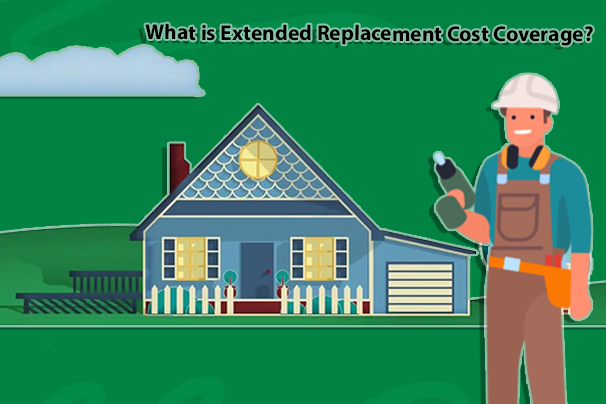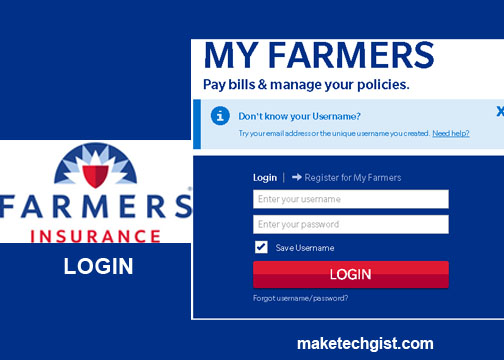An optional homeowners insurance coverage called extended replacement cost adds an extra degree of coverage to your house in the event of a costly disaster. Its cost raises the maximum amount of coverage for your residence by 10% to 50%. Moreover, rebuilding a home is more expensive following natural disasters and during inflationary times.

Therefore, this is a desirable coverage. For instance, a wildfire severely damages your home, and the rebuilding costs surpass your dwelling coverage limit. These extra costs will automatically get coverage by this policy, up to a predefined capped amount.
How Does Extended Replacement Cost Coverage Work?
The dwelling coverage limit of your home insurance policy is based on calculating the cost of rebuilding your home from the ground up at current rates. The cost of home replacement, also known as the square footage, construction type, and community labor and building supplies, is largely based on these factors. Providers adjust homeowners’ policy limits based on annual inflation estimates.
However, fail to account for significant increases in rebuild costs following natural disasters or the ongoing above-average inflation. Because of this, a lot of homeowners have inadequate insurance coverage and must use their own money to restore their homes to their pre-disaster state. Expanding homeowners insurance coverage to include extended replacement cost coverage is crucial due to increasing climate change-related disasters and inflation-driven reconstruction costs.
Moreover, a large number of people lack it. Approximately 80% of homeowners might not have extended replacement cost coverage. However, that need not apply to you. This coverage is available from 10% to 50% of the dwelling coverage maximum of your policy, depending on the major insurance company. That implies your home gets coverage for $250,000 if you take out a policy with $200,000 in coverage and add a 25% extended replacement cost.
Who Should Consider Extended Replacement Cost Coverage
If you live in a region that experiences hurricanes, wildfires, or other extreme events, you might want to consider purchasing extended replacement costs. This policy offers a safety net in case of unexpected inflation or building expenses following disasters, ensuring coverage for house reconstruction costs.
It’s important to keep in mind that this coverage will only cover a portion of your dwelling limit, so you can occasionally still have to pay out of pocket. In addition, you will be in charge of covering your deductible.
What Does Extended Replacement Cost Coverage Cover?
The maximum amount covered by your homeowners insurance policy may not cover an increase in the price of goods and services in the immediate aftermath of a natural disaster. Any gaps brought on by your present dwelling coverage limit might be filled in with the help of an extended replacement cost endorsement.
How Much Is Extended Replacement Cost Coverage?
The majority of insurance providers offer extended replacement costs in exchange for an extra policy payment. However, the amount varies based on the percentage you select but usually costs between $25 and $50 a year. Additionally, living near a shore or in a region with a high danger of wildfires may result in higher costs.
Should You Get an Extended Replacement Cost Coverage?
You can buy an endorsement to your current homeowners policy to add extended replacement costs. This additional coverage will cost you more money each year. However, if you live in a region that is prone to natural disasters and can afford it, it might be worth it. Furthermore, 80% of Americans have underinsured homeowners insurance plans due to inflation, growing expenses, and disruptions in global supply chains.
Where Can You Get Extended Replacement Cost Insurance?
Not all insurance providers provide an endorsement for extended replacement costs, but many do. If this endorsement is available from your present insurance provider, you may find out how much it will cost depending on your current plan. Look into alternative local and national insurance providers and compare their quotes if your present insurance provider does not provide this endorsement.
It is more difficult to locate a guaranteed replacement cost endorsement than an extended replacement cost endorsement. If an insurance provider provides both, find out how much more you would have to pay.
Who Needs Extended Replacement Cost Insurance?
Extended dwelling coverage can help protect against higher expenses following natural disasters in regions highly susceptible to flooding, storms, wildfires, earthquakes, or other such events. Generally, the cost of rebuilding or repairing homes rises when an area has widespread damage and destruction because the affected population has a greater demand for labor and resources.
Final Thoughts
Extended replacement cost coverage is becoming a prudent financial decision due to the increasing unpredictability of natural disasters and the constantly changing dynamics of the construction industry. For peace of mind, at $30 to $50 every year, you may ensure that, in the event of the worst, the road to reconstruction and recuperation is as straightforward as feasible.





